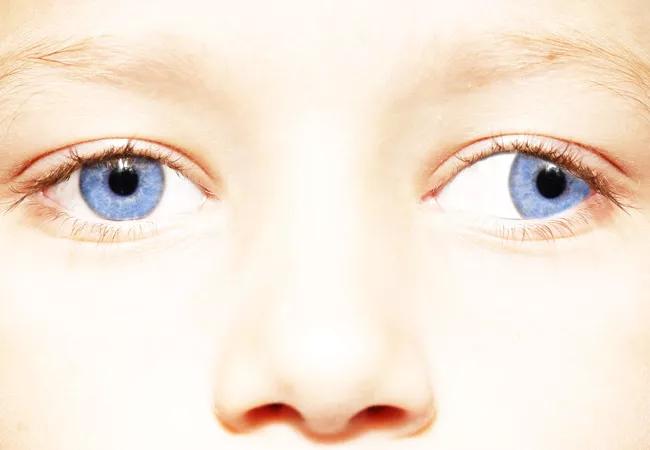Effect of low-dose atropine and dual-focus contact lenses is unknown in patients with comorbid eye conditions

The prevalence of myopia, the most common refractive error, is rising quickly. Often first detected in children between ages 8 and 12, myopia is predicted to affect 50% of the global population by 2050. Ten percent of that group is anticipated to have high myopia, which increases the risk of cataracts, retinal damage and glaucoma. That risk rises as the patient ages.
Advertisement
Cleveland Clinic is a non-profit academic medical center. Advertising on our site helps support our mission. We do not endorse non-Cleveland Clinic products or services. Policy
This risk of future complications has pushed pediatric practices to try to slow myopia progression, says Alexandra Williamson, OD, a pediatric optometrist at Cleveland Clinic Cole Eye Institute. Novel treatments such as low-dose atropine eye drops and dual-focus contact lenses have become widely prescribed for children as their myopia develops and worsens. The hope is that these treatments will reduce the patient’s risk of developing potentially blinding conditions in adulthood.
These treatments have been well studied in otherwise healthy children, but not in children with comorbid eye conditions. This dearth of research spurred Dr. Williamson and her Cleveland Clinic colleagues to do a retrospective study recently published in Optometry and Vision Science.
Beyond the lack of research on myopia treatments for children with comorbidities, there’s a national shortage of pediatric eye care providers, notes Dr. Williamson. This lack of access could result in missed diagnoses of amblyopia or strabismus in children treated by non-pediatric providers, potentially causing some children to receive elective myopia treatments that produce unexpected outcomes.
“Before I recommend an elective treatment for someone with nearsightedness, I want to make sure they don’t have another condition that may worsen with myopia mitigation treatments,” says Dr. Williamson. “However, some conditions, especially intermittent strabismus, can be difficult to detect.”
Knowing that certain myopia treatments run counter to treatment for intermittent exotropia, the research team set out to investigate a population of children with both conditions. They intended to study the effects of myopia mitigation in these patients, however the cohort of patients treated for strabismus was too small to produce significant findings. One reason was that between 2012 and 2020, the period of the retrospective review, myopia mitigation treatments such as low-dose atropine were just becoming widespread.
Advertisement
Instead, researchers used their data to compare the rate of natural myopia progression among more than 1,200 patients with or without intermittent exotropia.
In the group, 22% had myopia with intermittent exotropia while 78% had myopia alone. The patients, between ages 3 and 15, were seen from 2012 to 2020.
The analysis found that natural myopia progression was the same between the two groups over an average of two years. There was no significant difference in progression between patients who had corrective surgery for intermittent exotropia and those who did not.
“Our paper shows that natural progression is the same in both groups, and that surgical correction of exotropia doesn’t alter myopic progression,” says Dr. Williamson. “However, we still don’t know if elective myopia mitigation efforts like using low-dose atropine or dual-focus contact lenses could worsen intermittent exotropia.”
She’d like to see future studies delve into the safety of myopia treatments in the setting of comorbid conditions like this.
In the meantime, Dr. Williamson urges caution: “Because myopia progression treatments are catching fire in our field right now, this paper is a reminder to my peers to carefully screen patients for whom we’re recommending preventive treatments, making sure we rule out other conditions. This will ensure our recommendations remain evidence based.”
Advertisement
Advertisement

Registry data highlight visual gains in patients with legal blindness

Study is first to show reduction in autoimmune disease with the common diabetes and obesity drugs

It’s the first step toward reliable screening with your smartphone

Fixational eye movement is similar in left and right eyes of people with normal vision

Oral medication may have potential to preserve vision and shrink tumors prior to surgery or radiation

A new online calculator can determine probability of melanoma

Therapies include steroid implants, immunomodulation and biologics

Only 33% of patients have long-term improvement after treatment